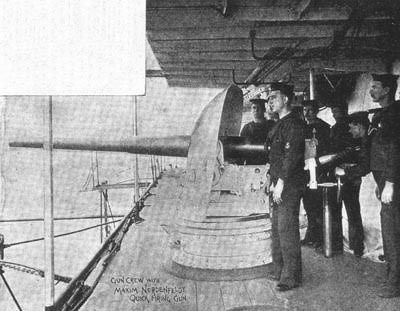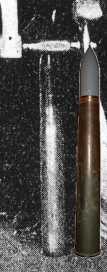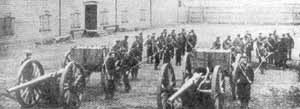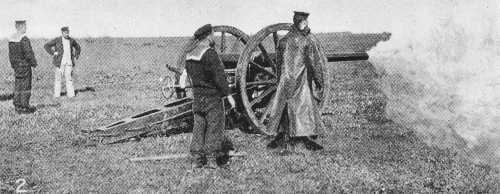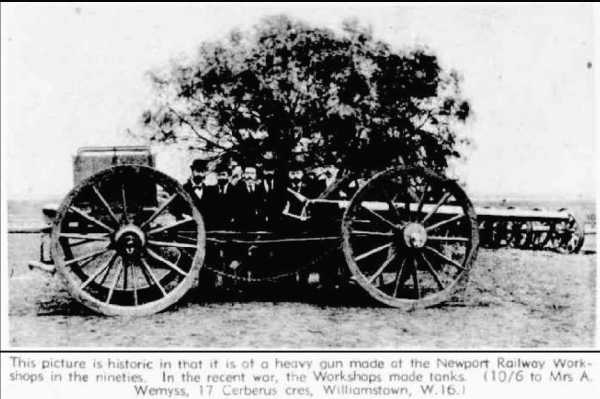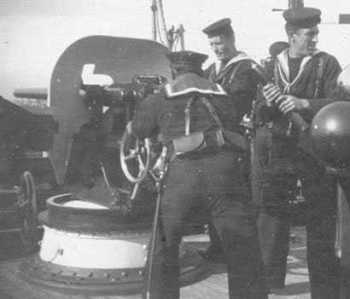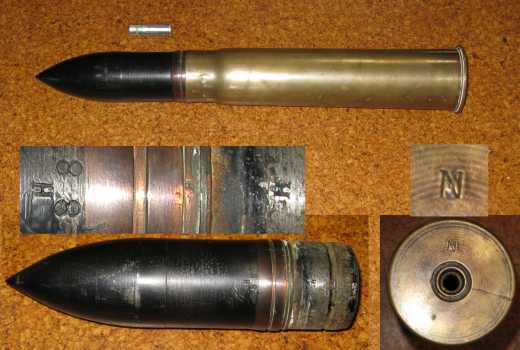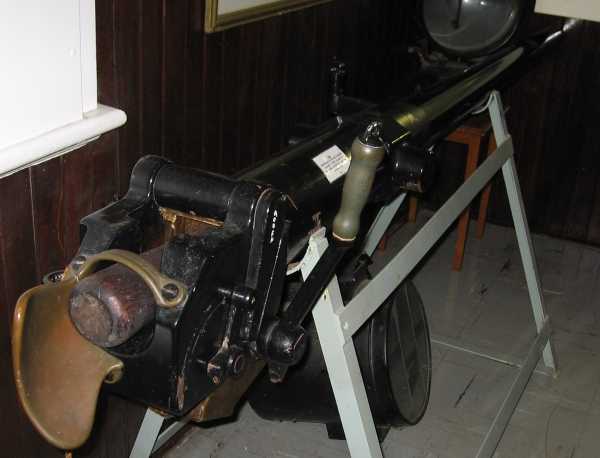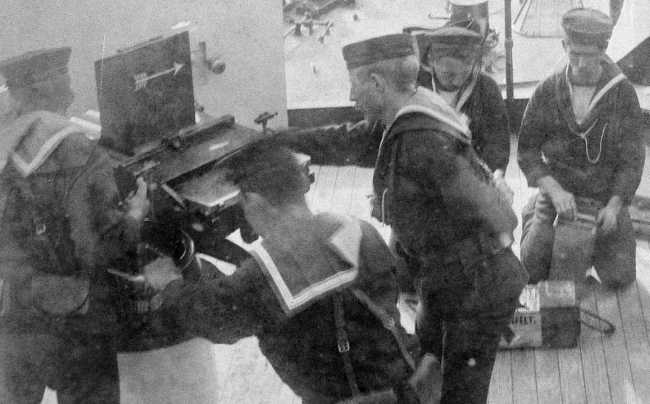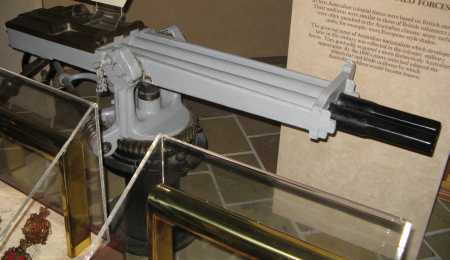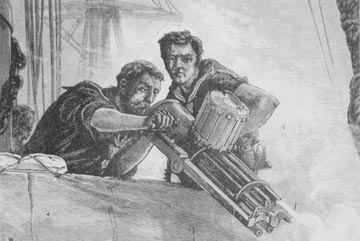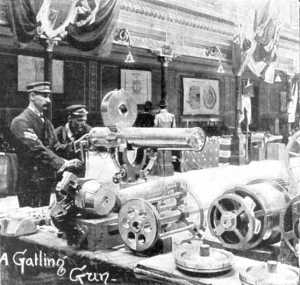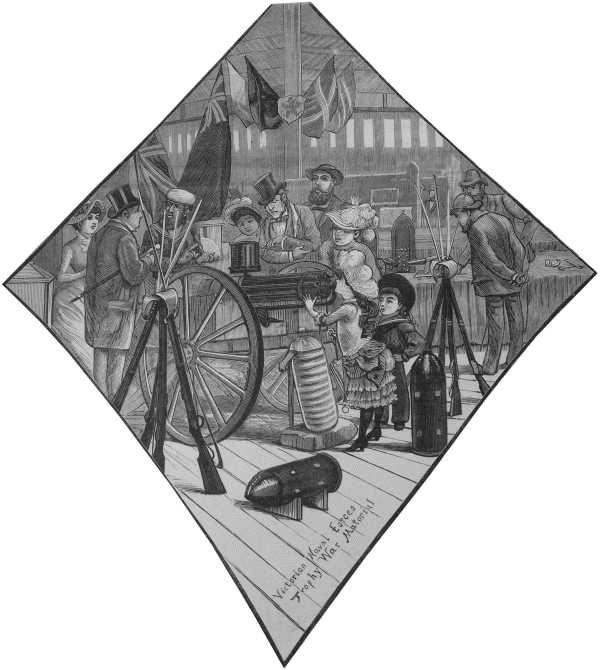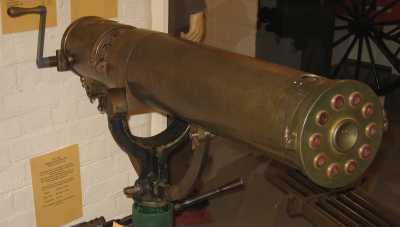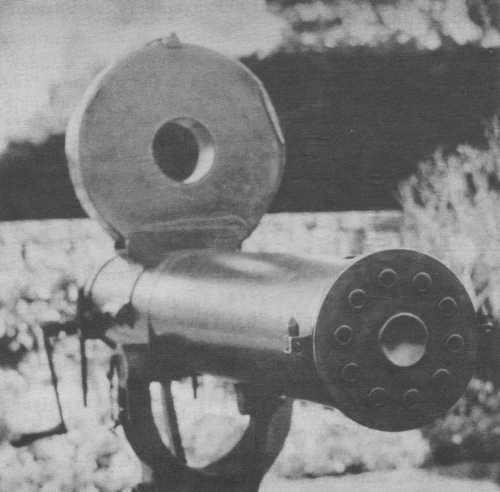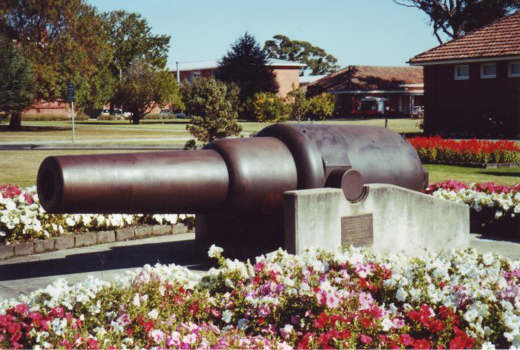
Described as "the most magnificent guns in the word"¹ the 10 inch Rifled Muzzle Loading (RML) Guns fired a 400 pound shot or shell using a charge of 60 pounds of gunpowder. Weighing 18 tons the range of the guns, at 11 degrees (maximum elevation) was 5,000 yards.
Cerberus was originally fitted with four Mark I versions of this gun. The right gun in the aft turret was replaced with another Mark I in 1885 when the barrel cracked. The left gun in the same turret was replaced with the Mark II version in 1898 when one of its trunnions cracked.
The gun on the left is the damaged gun removed in 1898. It is shown here at HMAS CERBERUS at Crib Point.
Given that at least four of the Mk I guns on HMS Hercules also suffered from cracked barrels it would appear that the Mk I guns had a serious design fault. It would appear that the gun placed on board Cerberus in 1885 (no. 8) was one of the damaged guns from HMS Hercules that had been retubed.

